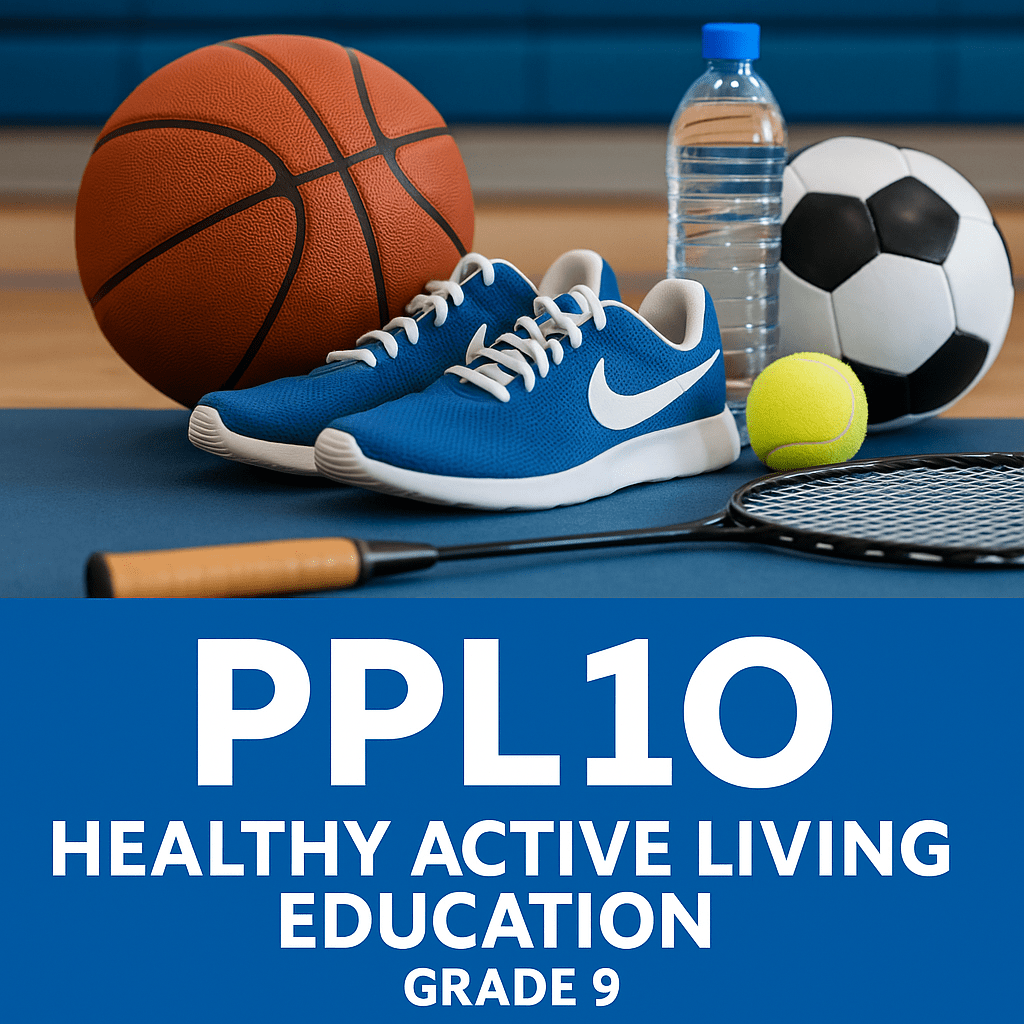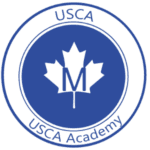PPL1O – Grade 9 Healthy Active Living Education Online Course
Send Us A Message
PPL1O – Grade 9 Healthy Active Living Education Online Course

- Course Code: ESLBO
Course Type: Open
Format: Online School Course
Prerequisite: None
Tuition Fee: $574 CAD (Includes GST)
Course Description
The ESLBO Level 2 English as a Second Language (ESL) course is designed for students who have a basic understanding of English and wish to further develop their skills. This course focuses on building intermediate language abilities in speaking, listening, reading, writing, and grammar. It provides a structured environment for students to improve fluency, expand vocabulary, and enhance overall communication.
The ESLBO Level 2 course is fully online, offering flexibility and convenience for students to learn at their own pace. Through interactive lessons, practical exercises, and engaging activities, this course prepares students to confidently use English in daily conversations, academic settings, and work environments.
Outline of Course Content
Unit
Titles and Descriptions
Time and Sequence
Unit 1
Enhanced Speaking and Listening Skills
- Understanding and responding to a variety of spoken English (e.g., conversations, news broadcasts, interviews)
- Practicing pronunciation and stress in longer sentences
- Engaging in group discussions and debates
- Listening for specific information and summarizing spoken content
12 hours
Unit 2
Reading Comprehension and Vocabulary Expansion
- Reading short articles, stories, and dialogues with intermediate-level complexity
- Identifying the main ideas and key details in texts
- Expanding vocabulary through reading and context clues
- Practicing reading fluency and pronunciation
10 hours
Unit 3
Writing Skills and Sentence Structure
- Writing descriptive and narrative paragraphs
- Improving sentence structure with conjunctions and transition words
- Using proper punctuation, grammar, and formatting in written work
- Writing short formal and informal letters/emails
12 hours
Unit 4
Intermediate Grammar and Sentence Patterns
- Understanding and applying present continuous, past continuous, and future tenses
- Using articles, prepositions, and conjunctions correctly
- Practice with complex sentence structures (e.g., compound and complex sentences)
- Clarifying common grammar mistakes
10 hours
Unit 5
Practical Communication for Social and Professional Settings
- Introducing yourself and others in a professional setting
- Discussing topics such as work, travel, hobbies, and personal experiences
- Making phone calls, appointments, and giving directions
- Engaging in informal and formal conversations
10 hours
Unit 6
Interactive Practice and Self-Assessment
- Participating in online discussions and group projects
- Completing quizzes and assessments to test comprehension and grammar
- Practicing conversations and real-world scenarios with classmates
- Receiving feedback from instructors to enhance learning
10 hours
Final Evaluation
The final assessment task is a three-hour exam worth 20% of the student’s final mark.
3 hours
Total
64 hours
A: Scientific Investigation Skills and Career Exploration
Assessment is a systematic process of collecting information or evidence about student learning. Evaluation is the judgment we make about the assessments of student learning based on established criteria. The purpose of assessment is to improve student learning. This means that judgments of student performance must be criterion-referenced so that feedback can be given that includes clearly expressed next steps for improvement.
The assessment will be based on the following processes that take place in the classroom:
| Assessment FOR Learning | Assessment AS Learning | Assessment OF Learning |
|---|---|---|
During this process the teacher seeks information from the students in order to decide where the learners are and where they need to go. | During this process the teacher fosters the capacity of the students and establishes individual goals for success with each one of them. | During this process the teacher reports student’s results in accordance to established criteria to inform how well students are learning. |
| Conversation | Conversation | Conversation |
Classroom discussion Self-evaluation Peer assessment | Classroom discussion Small group discussion Post-lab conferences | Presentations of research Debates |
| Observation | Observation | Observation |
| Drama workshops (taking direction) Steps in problem solving | Group discussions | Presentations Group Presentations |
| Student Products | Student Products | Student Products |
| Reflection journals (to be kept throughout the duration of the course) Check Lists Success Criteria | Practice sheets Socrative quizzes | Projects Poster presentations Tests In Class Presentations |
Tools of varying complexity are used by the teacher to facilitate this. For the more complex evaluations, the criteria are incorporated into a rubric where levels of performance for each criterion are stated in language that can be understood by students.
anecdotal | tests |
quizzes | culminating activities including: |
labs/performance tasks | – labs/performance tasks |
presentations | – research reports |
research | – presentations |
labs | – portfolios |
Assessment is embedded within the instructional process throughout each unit rather than being an isolated event at the end. Often, the learning and assessment tasks are the same, with formative assessment provided throughout the unit. In every case, the desired demonstration of learning is articulated clearly and the learning activity is planned to make that demonstration possible. This process of beginning with the end in mind helps to keep focus on the expectations of the course as stated in the course guideline. The evaluations are expressed as a percentage based upon the levels of achievement.
The evaluation of this course is based on the four Ministry of Education achievement categories of knowledge and understanding (25%), thinking (25%), communication (25%), and application (25%). . The evaluation for this course is based on the student’s achievement of curriculum expectations and the demonstrated skills required for effective learning.
The percentage grade represents the quality of the student’s overall achievement of the expectations for the course and reflects the corresponding level of achievement as described in the achievement chart for the discipline.
A credit is granted and recorded for this course if the student’s grade is 50% or higher. The final grade for this course will be determined as follows:
- 70% of the grade will be based upon evaluations conducted throughout the course. This portion of the grade will reflect the student’s most consistent level of achievement throughout the course, although special consideration will be given to more recent evidence of achievement.
- 30% of the grade will be based on a final exam administered at the end of the course. The exam will contain a summary of information from the course and will consist of well-formulated multiple-choice questions. These will be evaluated using a checklist.
Unit
Description
Evaluation Weight
KICA
Unit 1
Strand 1: Scientific investigation skills and career exploration
Strand 2: Biology
Quiz 3%
Assignment 5%
Test 9.5%
Total 17.5%
25/25/25/25
Unit 2
Strand 1: Scientific investigation skills and career exploration
Strand 3: Chemistry
Quiz 3%
Assignment 5%
Test 9.5%
Total 17.5%
25/25/25/25
Unit 3
Strand 1: Scientific investigation skills and career exploration
Strand 4: Earth and Space Science
Quiz 3%
Assignment 5%
Test 9.5%
Total 17.5%
25/25/25/25
Unit 4
Strand 1: Scientific investigation skills and career exploration
Strand 5: Physics
Quiz 3%
Assignment 5%
Test 9.5%
Total 17.5%
25/25/25/25
Culminating activity
10%
25/25/25/25
Final Exam
20%
25/25/25/25
The percentage grade represents the quality of the students’ overall achievement of the expectations for the course and reflects the corresponding achievement as described in the achievement charts and will be 70% of the overall grade for the course; the Final evaluations will be 30% of the overall grade, incorporating a student/teacher conference and final exam.
Percentage of the Mark
Categories of Mark Breakdown
70%
Assignments (20%)
Tests (38%)
Labs and Quiz (12%)
30%
Culminating Activity (5%) and In Class discussion and presentations (Observations and Conversation (5%)
Final Exam (20%)
Main Resources
Textbook
- Nelson Science Perspectives 9 © 2011
Potential Resources
- Lab simulation software
- Various internet websites
Frequently Asked Questions (FAQ)
What topics are covered in the SNC1D course?
The course covers biology, chemistry, earth and space science, and physics, focusing on sustainable ecosystems, atomic structures, the universe, and electricity.
What is the course evaluation structure?
70% of the grade comes from assignments, tests, and quizzes, while 30% comes from the culminating activity and final exam.
Are there any prerequisites for this course?
No, this course has no prerequisites.
What resources are used in this course?
The main resource is the textbook Nelson Science Perspectives 9 (2011), along with lab simulation software and internet resources.
How are students assessed throughout the course?
Assessments include quizzes, assignments, tests, labs, presentations, and a final exam worth 20% of the final grade.
